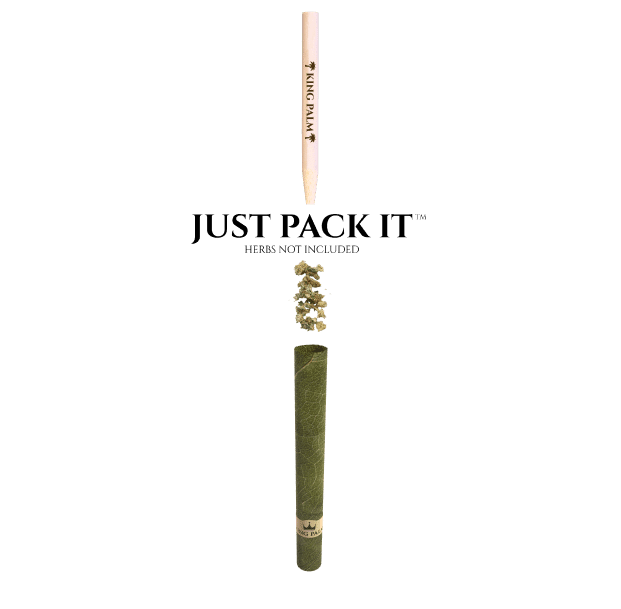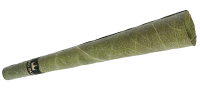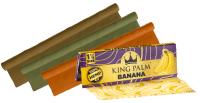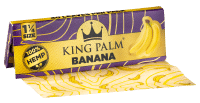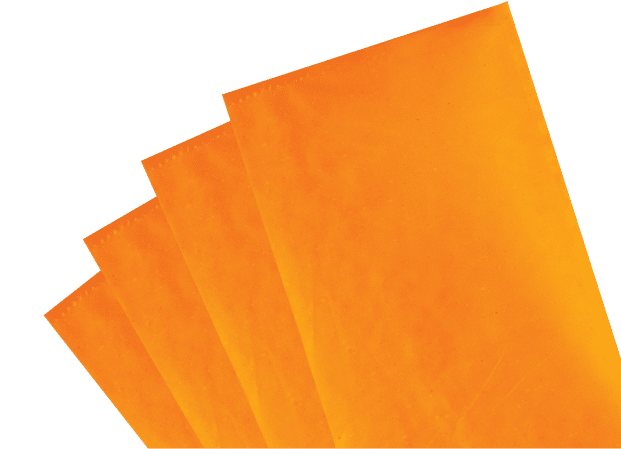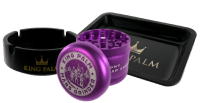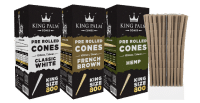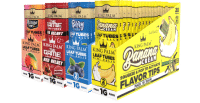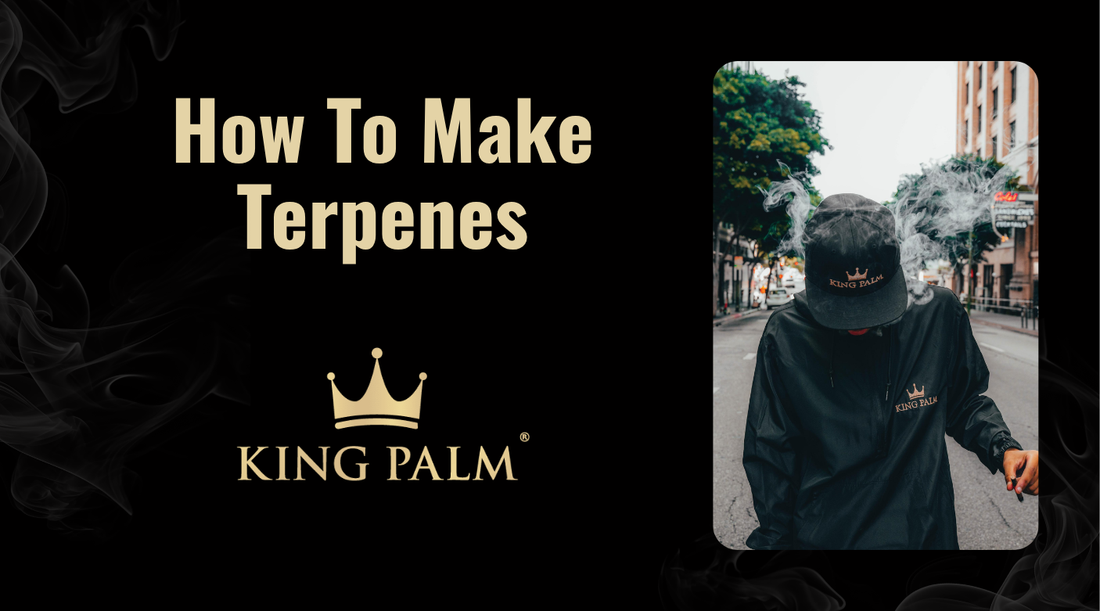You can make terpenes at home by using steam distillation, cold pressing, or solvent extraction; each method isolates the plant’s natural oils responsible for flavor and aroma.

Here’s how it breaks down:
-
Steam distillation is ideal for cannabis, herbs, and flowers.
-
Cold pressing works best for citrus peels like orange and lemon.
-
Solvent extraction is used on sticky botanicals that resist pressure or heat.
Want a shortcut? King Palm’s terpene-infused tips deliver clean flavor with zero gear required.
If you’re ready to make your own, we’ll walk you through each method, the gear you’ll need, and tips to keep your extracts potent and clean.
What Terpenes Are and Why People Extract Them
Terpenes are aromatic compounds found in plants. They shape the scent and taste of citrus peels, pine needles, cannabis, and herbs. Limonene smells citrusy. Myrcene adds a musky, earthy note. Pinene leans sharp and piney. These oils are highly volatile, meaning they evaporate fast and carry aroma through heat or vapor.
Why People Make Their Own
People extract terpenes to control quality, flavor, and consistency. This is common in cannabis and botanical spaces where flavor enhancement or strain-specific profiles matter. Home extraction lets you isolate pure terpenes from your own herbs, peels, or flower, without additives, glue, or carrier oils.
This hands-on approach also helps with custom blending.
Some terpene fans make mixes that lean calming, uplifting, or balanced. Others use them to finish infused pre-rolls or concentrates. If you're not up for full DIY, products like the Flavored Palm Cones are an easy starting point.
Steam Distillation
Steam distillation is the go-to method for isolating terpenes from plants like cannabis, rosemary, and mint.
It works by heating water in a flask until it produces steam. That steam carries volatile terpene oils from plant material into a cooling tube. The vapor condenses into a mix of water and oil, which separates naturally after collection.
This method works well for monoterpenes such as pinene, limonene, and myrcene. These lighter compounds vaporize at lower temperatures, which makes steam an ideal carrier. Distilling at too high a heat can burn off the terpene or change its profile, so maintaining a steady temperature is key.
To set it up, you’ll need:
-
A boiling flask (glass or stainless steel)
-
A condenser tube or coil
-
A collection beaker
-
Heat source and thermometer
Once the steam condenses, the oil rises to the surface and can be skimmed off using a pipette. This gives you a raw terpene extract that’s ready to blend or store. Some extractors cool the condenser coil with ice packs or flowing water to increase yield and clarity.
If you're planning to use the extract in rolls or pre-packed wraps, a clean terpene profile can boost the flavor dramatically. A finished product like the 100-Pack Flavored Terpene Tips replicates this same result, without the setup time or cleanup.
Cold Pressing

Cold pressing is a mechanical extraction method used on citrus peels, especially lemon, lime, and orange. The outer rind holds high concentrations of terpenes, which can be released through pressure, no heat or solvent required.
Step 1: Choose and Prepare Your Citrus
-
Select fresh citrus fruits like lemons, limes, or oranges.
-
Wash thoroughly, then zest or peel the outer rind (avoid the bitter white pith underneath).
Step 2: Press the Peels
-
Place the zest or peels into a manual or hydraulic press.
-
Apply firm, even pressure to extract the aromatic oil. No heat or solvents are needed, just mechanical force.
Step 3: Collect and Rest the Liquid
-
Gather the pressed liquid in a clean glass container.
-
Let it sit for a few hours to allow heavier particles to settle naturally.
Step 4: Filter for Purity
-
Strain the rested liquid through cheesecloth or a fine mesh filter to remove pulp, wax, or residue.
-
The result is a clean citrus oil, rich in terpenes like limonene.
Step 5: Store or Use Immediately
-
Use the oil to enhance pre-rolls, infuse botanicals, or blend with other terpene isolates.
-
If pairing with cannabis, start with just one drop per gram, these oils are potent.
This method keeps the terpene profile natural and unaltered, delivering a fresh citrus aroma perfect for DIY infusion. One drop per gram is usually enough.
For a ready-to-pack option that balances tropical fruit with subtle sweetness, check out the Peach Pineapple Mini Rolls. They use fruit-forward infusion without artificial flavoring.
Solvent Extraction

Solvent extraction pulls terpenes from plant matter using liquids like ethanol or hexane. This method works when you’re targeting denser, stickier sources, like fresh cannabis, dense herbs, or dried hops, that don’t release oil easily through pressure or steam.
Step 1: Select Your Solvent
-
Go with food-safe ethanol if you plan to consume the final product.
Step 2: Soak the Plant Material
-
Place your material, like sticky cannabis, dried hops, or resinous herbs, into a clean glass jar.
-
Pour in enough solvent to cover it completely.
-
Seal and soak for several hours or overnight.
Step 3: Filter the Liquid
-
Strain the mixture using filter paper or a fine mesh to remove solids.
-
You’re left with a clear or golden terpene-infused solvent.
Step 4: Evaporate the Solvent
-
Pour the liquid into a shallow dish and let it sit in a well-ventilated area.
-
To preserve delicate terpene profiles, use a vacuum oven or rotary evaporator to speed things up without heat damage.
Step 5: Store Your Terpene Oil
-
After full evaporation, collect the remaining oil.
-
Store in a sealed, light-proof container to maintain freshness and potency.
Not into DIY? King Palm’s Berry Terps Mini Rolls offer terpene infusion done right, smooth, flavorful, and consistent every time.
Solid-Phase Microextraction (SPME)
SPME is a more precise method designed for lab testing and formulation. It doesn’t use liquid or heat.
Instead, a coated fiber, similar to fishing line, is inserted into the headspace above a sample. Terpenes naturally vaporize into the air, stick to the coating, and are then released into a gas chromatography unit for analysis or isolation.
This process works best for those who want detailed terpene profiles or need micro-extraction for blending. It’s also used when you want to avoid solvent use altogether. But the catch is you’ll need the right tools.
SPME setups include fiber holders, GC injection ports, and often require calibration software.
While not a go-to for home use, the insights from this method inform how terpene profiles get blended in commercial products. Balanced tip formats like the Magic Mint Terpene-Infused Tips benefit from that kind of lab refinement, where the cooling flavor complements rather than overwhelms.
Emission Trapping
Emission trapping captures terpenes released into the air by live plants. It uses absorbent tubes or resin columns placed in the airflow around herbs, flowers, or cannabis.
As the plant breathes and releases aroma compounds, the device traps them. After collection, the tubes are washed with solvent or processed in a vacuum oven to release the terpenes.
This approach is commonly used in labs studying native terpene emissions or strain profiles in cannabis. It works without damaging the plant, which means you can sample terpenes from a living specimen across time.
The downside is output; it yields less than any other method covered in this guide and requires specialized gear.
For casual extractors or home setups, emission trapping isn’t practical. But it helps explain how product developers test and tweak terpene balance before going to market. Flavor-balanced tips like the 100-Pack Flavored Terpene Tips begin with this kind of precision mapping, long before they’re rolled, packed, or shipped.
Gear You’ll Need
Different extraction methods call for different setups. Here’s what you actually need to get started, and what can wait.
Steam Distillation Setup:
-
1L glass boiling flask
-
Condenser coil with adapters
-
Heat plate with temperature control
-
Ice bath or flow-through chiller
-
Separator funnel or glass pipette
This gear setup covers most monoterpene extraction needs. Avoid using plastic anywhere in the vapor path, it interferes with flavor and doesn’t hold up under heat.
Cold Pressing Tools:
-
Manual citrus press or hydraulic plate
-
Fine mesh strainer or cheesecloth
-
Funnel and amber glass bottles
You won’t need heat, solvents, or precision tools. Cold pressing works best when you process fresh peels within hours of zesting. Freeze them first to help rupture oil cells before pressing.
Solvent Extraction Basics:
-
Food-safe ethanol or CO₂-compatible solvent
-
Glass jars and lids
-
Fine strainer or vacuum filter
-
Low-temp hot plate or vacuum chamber
Those using solvent extraction should always work in ventilated areas. Ethanol evaporates cleanly but still needs patience. Shortcuts here affect taste and consistency.
Ready-to-use terpene formats like the Peach Pineapple Mini Rolls skip the setup entirely. They deliver fruit-rich blends in a pre-packed roll that burns smooth and clean, ideal if you’re after taste with zero prep.
Storage Tips That Keep Terpenes Potent
Terpenes break down fast when exposed to heat, light, or oxygen. Improper storage can flatten flavor or change aroma entirely. The structure of the oil matters, limonene, for example, degrades rapidly in sunlight, while linalool oxidizes with air.
Use amber or cobalt glass vials with airtight caps. Store them in a cool drawer, refrigerator, or wine cooler set below 60°F. Keep containers upright and avoid opening them frequently. For larger batches, split into smaller vials so the main supply stays sealed until needed.
Avoid plastic containers. Terpenes cling to synthetic surfaces and leach out over time. Even food-grade plastic affects taste.
If you're working with pre-infused materials like the Magic Mint Terpene-Infused Tips, keep the packaging sealed and out of direct sun. These are shelf-stable for weeks, but flavor holds longer in low light and low heat.
What the DIY Crowd Is Discovering
Many home extractors are refining terpene methods beyond the basics.
Frozen Peel Pressing
Freezing citrus peels before cold pressing makes the oil glands more brittle. This simple step improves yield and clarity. Let peels thaw slightly before pressing to avoid cracks in the collection bowl.
French Press Infusion
Some use a glass French press to steep dried herbs or flower in food-grade ethanol. The plunger keeps solids down while liquid extract collects at the top. Once filtered and evaporated, the remaining oil holds distinct aromatics.
Vacuum-Assisted Distillation
For those using steam methods, adding vacuum pressure can lower boiling temps and protect delicate compounds. This setup needs more gear, a vacuum pump, sealed chamber, and temp monitor, but the result is a smoother extract with less thermal degradation.
Blending Your Terpenes: The Flavor Game
Combining terpene isolates is where customization takes off. Whether you’re after something calming, citrus-heavy, or sharp and piney, the blend ratio shapes both the inhale and the aftertaste.
Starter Blends to Try
-
Limonene + Myrcene (3:1): Bright citrus with soft earthiness underneath.
-
Linalool + Caryophyllene (2:2): Balanced floral-spice combo good for late-day use.
-
Pinene + Terpinolene (4:1): Foresty, crisp, and energizing when used sparingly.
Tools for Control
Use glass droppers, microbeakers, or lab syringes to measure every drop. Start small, five drops per test blend, and label every vial. Even a slight change shifts the profile. Document each batch and let it rest 24 hours before use.
If You’re Going to Do It, Do It Clean
Whether you're experimenting with steam distillation or just curious how terpene profiles come together, one thing’s clear: clean flavor starts with clean extraction.
But if you’d rather skip the setup and still enjoy rich, botanical taste, King Palm’s terpene-infused tips give you that full-spectrum experience, no lab required.
Try these terpene-infused favorites:
FAQ: Making Terpenes
What's the Best Plant for High-Yield Terpenes?
Citrus peels consistently deliver strong yields using simple cold press methods. Cannabis flower, lavender, and basil also extract well using steam or solvent.
Can I Use Store-Bought Alcohol?
Food-grade ethanol works. Isopropyl does not. Stick with products labeled safe for consumption or tincture-making.
What Kind of Still Do I Need?
A small glass steam distillation kit covers most terpene extraction needs. Look for a condenser coil, a receiver, and heat-safe joints. Pressure cookers and stovetop stills carry too much risk for fragile oils.
Do Certain Strains Produce Better Terpenes?
Yes. Sour Diesel, Tangie, and Gelato are all known for complex profiles. So are herbs like lemon balm and hops. Strain choice shapes outcome.
Can I Mix Terpenes?
You can. Blending works best when done drop by drop. Use glassware or syringes to measure, and label every batch. If you're unsure how different profiles will layer, try a base product like the Flavored Palm Cones to experience a calibrated terpene blend before making your own.

